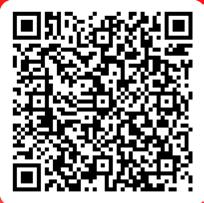
3 minute read
2023 BUYER PRE-REGISTRATION FORM
Purchaser Trading Name:
Contact Name:
Advertisement
Address:
PIC:
Post Code:
Telephone: Mobile:
Email:
Agents Trading Name:
Agents Address:
Do you require society transfers?
Prefix
PLEASE NOTE FOLLOWING DISCLAIMER: Insurance risk of any stud animal sold at auction transfers to the purchaser at the fall of the hammer. Any animal remaining on the vendor’s property is at the risk of the purchaser, it is advised at a minimum that a full loss of use insurance policy is taken at time of sale.
Stud animals are not covered by commercial livestock transit insurance at any point.
Please note – if you intend on bidding via Auctions Plus, you need to register with AuctionsPlus prior to sale day. This registration does not cover those intending to bid solely on AuctionsPlus. Also, it is vitally important that on sale day you collect your buyers registration (bidding) number and acknowledge that you have read, understood and agree to be bound by the terms and conditions as stated on our sale day buyers registration cards and as on display at the sale office.
Signature: Date:
Print Name:
Please return this form to Elders Armidale & Guyra –dg_armidale@elders.com.au
Elders Armidale PO Box 253 Armidale NSW 2350 Phone 02 6775 4500
Alternatively –
Please scan the QR code which will direct you to our online Female Sale Registration Form via the Bald Blair website

Recessive Genetic Conditions - Information For Bull Buyers
This is information for bull buyers about the recessive genetic conditions, Arthrogryposis Multiplex (AM), Hydrocephalus (NH), Contractural Arachnodactyly (CA) and Developmental Duplications (DD).
Putting undesirable Genetic Recessive Conditions in perspective
All animals, including humans, carry single copies (alleles) of undesirable or “broken” genes. In single copy form, these undesirable alleles usually cause no harm to the individual. But when animals carry 2 copies of certain undesirable or “broken” alleles it often results in bad consequences. Advances in genomics have facilitated the development of accurate diagnostic tests to enable the identification and management of numerous undesirable or “broken” genes. Angus Australia is proactive in providing its members and their clients with relevant tools and information to assist them in the management of known undesirable genes and our members are leading the industry in their use of this technology.
What are AM, NH, CA and DD?
Key point: With today’s DNA tools undesirable genetic conditions can be managed!
AM, NH, CA and DD are all recessive conditions caused by “broken” alleles within the DNA of individual animals. When a calf inherits 2 copies of the AM or NH alleles their development is so adversely affected that they will be still-born.
In other cases, such as CA and DD, calves carrying 2 copies of the broken allele may reach full-term. In such cases the animal may either appear relatively normal, or show physical symptoms that affect their health and/ or performance.
How are the conditions inherited?
Key point: The number of reported observations of AM, NH, CA and DD calves is very low and there is certainly no need for panic.
Research in the U.S. and Australia indicates that AM, NH, CA and DD are simply inherited recessive conditions. This means that a single gene (or pair of alleles) controls the condition. For this mode of inheritance two copies of the undesirable allele need to be present before the condition is seen; in which case you may get an abnormal calf. A more common example of a trait with a simple recessive pattern of inheritance is black and red coat colour. Animals with only one copy of the undesirable allele (and one copy of the normal form of the allele) appear normal and are known as “carriers”.
What happens when carriers are mated to other animals? Carriers, will on average, pass the undesirable allele to a random half (50 %) of their progeny.
When a carrier bull and carrier cow is mated, there is a 25% chance that the resultant calf will inherit two normal alleles, a 50% chance that the mating will result in a carrier (i.e. with just 1 copy of the undesirable allele, and a 25% chance that the calf will inherit two copies of the undesirable gene.
If animals tested free of the undesirable gene are mated to carrier animals the condition will not be expressed at all. All calves will appear normal, but approximately half (50%) could be expected to be carriers.
How is the genetic status of animals reported?
Key point: For the condition to be expressed the undesirable gene needs to be present on both sides of the pedigree and both the sire and dam need to be a carrier.
DNA-based diagnostic tests have been developed which can be used to determine whether an individual animal is either a carrier or free of the alleles resulting in AM, NH, CA or DD.
Angus Australia uses advanced software to calculate the probability of (untested) animals to being carriers of AM, NH, CA or DD. The software uses the test results of any relatives in the calculations and the probabilities may change as new results for additional animals become available.
The genetic status of animals is being reported using five categories. For NH, CA and DD, simply replace AM in the below table with NH, CA or DD.
AMF Tested AM free
AMFU Based on pedigree AM free – Animal has not been tested
AM__% __% probability the animal is an AM carrier
Registration certificates and the Angus Australia web-database display these codes. This information is displayed on the animal details page and can be accessed by conducting an “Animal Search” from the Angus Australia website or looking up individual animals listed in a sale catalogue.






